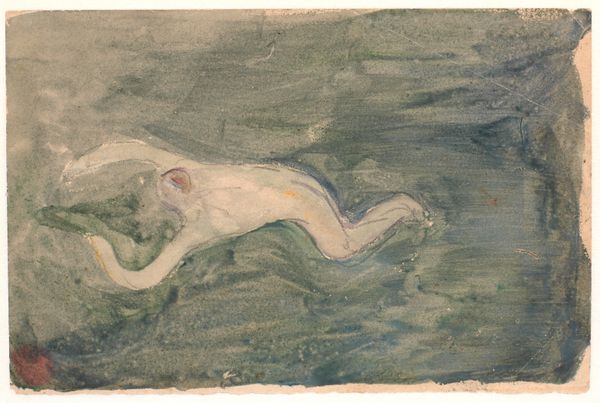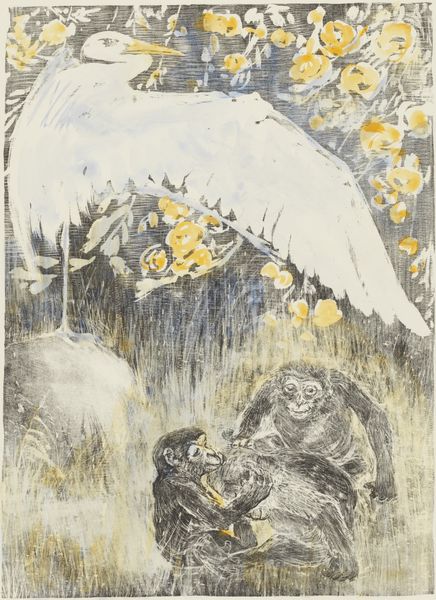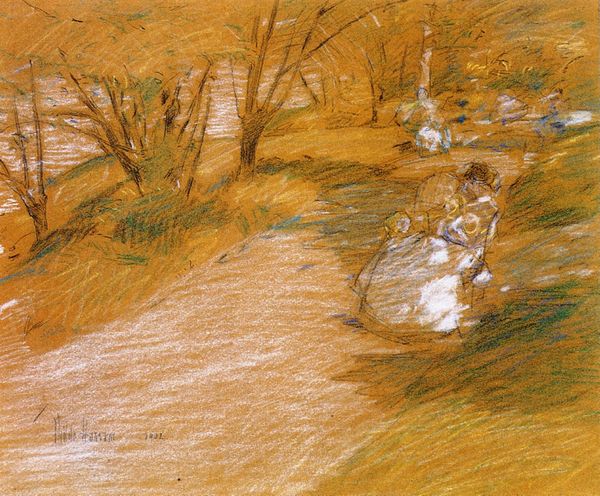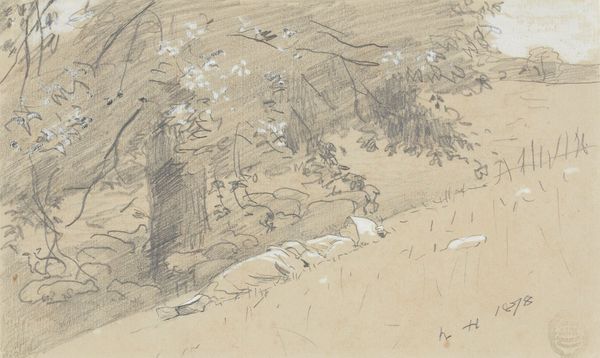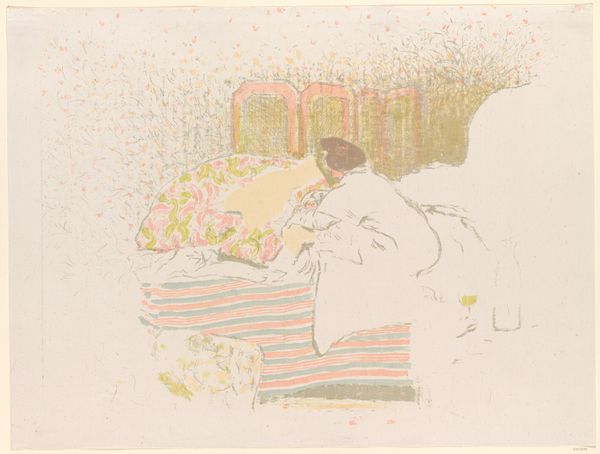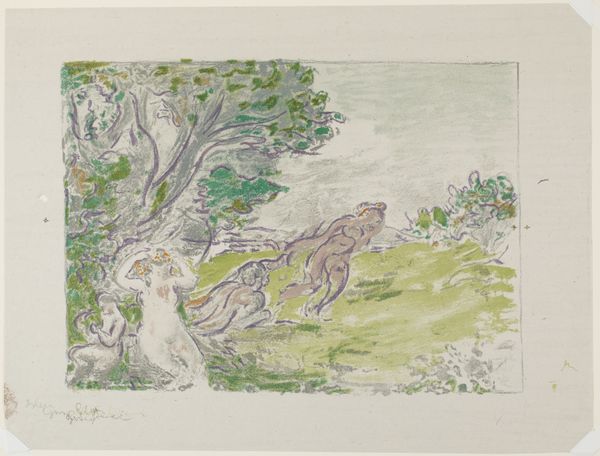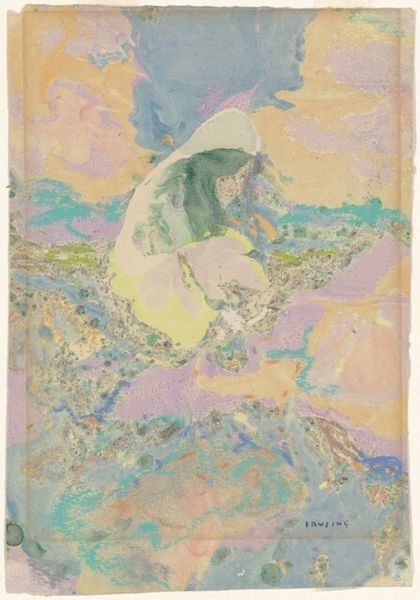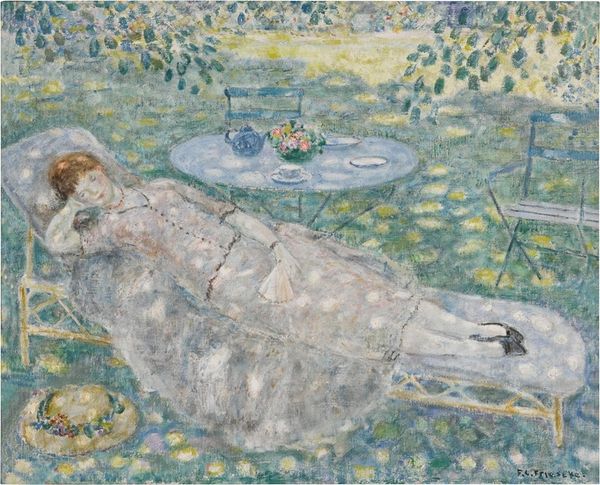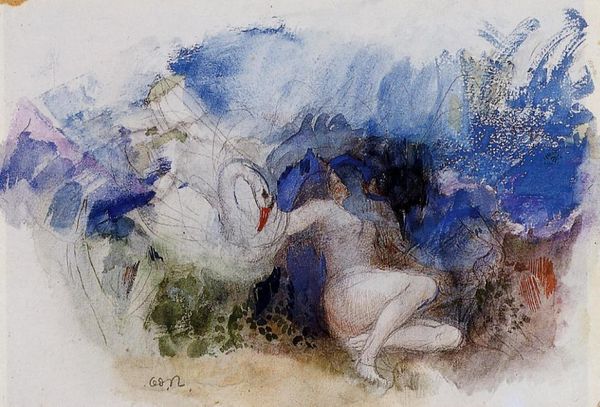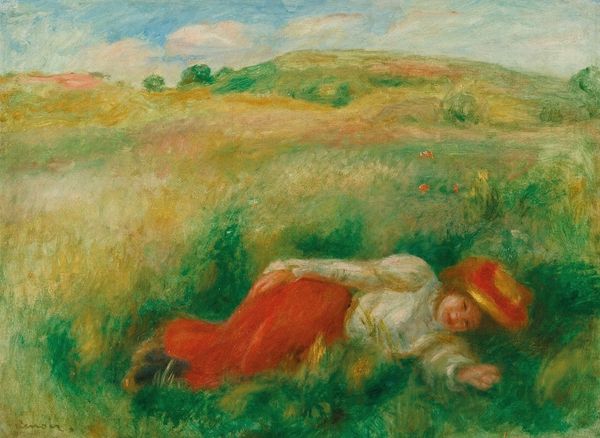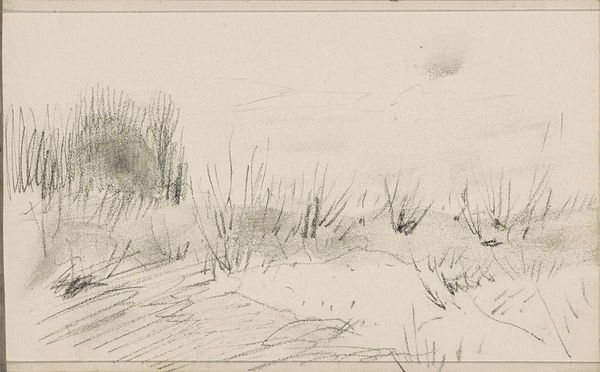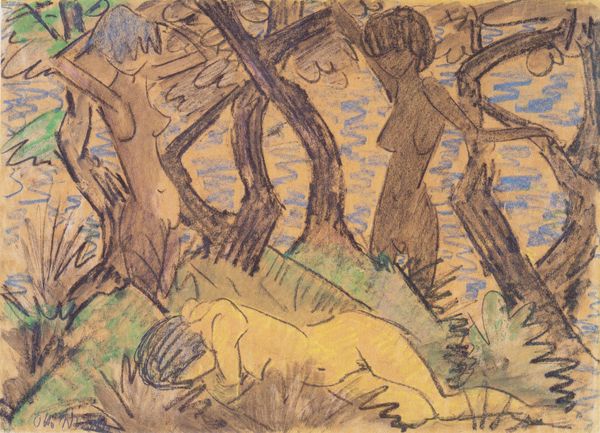
Dimensions: height 161 mm, width 215 mm
Copyright: Rijks Museum: Open Domain
Curator: This watercolor and pencil piece is titled "Woman Lying in the Dunes near Noordwijk," and it dates to 1902. It's by Jan Toorop and is held right here at the Rijksmuseum. Editor: My first impression is one of quiet reverie. There’s a beautiful haziness to the colours, and the woman seems completely at peace with her surroundings. It almost feels like stepping into a dream. Curator: I see it as a powerful representation of female subjectivity within the context of early 20th-century Dutch society. Toorop was navigating Symbolism and, crucially, witnessing evolving social structures; the painting, rather than simply depicting a woman resting, could also symbolize a growing independence. How are women beginning to occupy previously gendered public or private spheres? Editor: Absolutely, but even without the theoretical lens, there's a symbolism that speaks directly to the viewer. The dunes themselves – traditionally seen as a liminal space between land and sea – combined with the almost ethereal quality of the rendering, imbue this woman with a sense of transformation, as if she’s poised on the edge of some significant personal change. The flowers around her read like fertility symbols and, if you really zoom in, you see the village hints at a larger social ecosystem. Curator: I agree—these visual elements are carefully chosen and contribute to the artwork's underlying messages about nature, femininity, and landscape. I'm interested in how he chose to frame a modern, "emancipated" woman with recognizable symbols that have deep, culturally specific associations. Editor: What is truly compelling is Toorop's choice of medium – the delicacy of the watercolor and pencil gives it an ephemeral feeling. It enhances this very palpable sense of transience, as if both the landscape and the woman's emotional state are about to shift and be changed by historical forces, right? Curator: Yes, and it demonstrates, visually, the provisional and ever-shifting relationship between gendered people, gendered environments, and what kind of freedom is imaginable during the Modern period. Thanks, these layered meanings enrich the encounter with the piece. Editor: It adds an undeniable level of emotional depth; for me, anyway. It's why it has so much staying power.
Comments
rijksmuseum about 2 years ago
⋮
Toorop and his wife, Annie Hall, lived in Katwijk aan Zee between 1899 and 1904. His good friend, the poet Albert Verwey, lived in nearby Noordwijk. This drawing must have originated on one of his walks through the dunes to Verwey’s house. It is not known who the woman is. In the background is the seaside resort of Noordwijk aan Zee, with the Huis ter Duin hotel at the left.
Join the conversation
Join millions of artists and users on Artera today and experience the ultimate creative platform.

